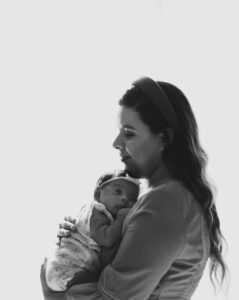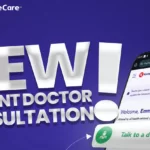
![]() Ginika Oluchi okekehealthcareMarch 31, 2025
Ginika Oluchi okekehealthcareMarch 31, 2025
When planning for marriage, love, values, and financial stability often take center stage. However, one important factor that many couples overlook is genotype compatibility.
Your genotype isn’t just a medical term. It plays a significant role in determining the health of your future children.
In this article, we will break down everything you need to know about genotype compatibility for marriage, its impact on family planning, and how to make informed decisions to prevent avoidable health challenges.

Genotype refers to the genetic makeup of an individual based on their inherited genes. It determines traits like eye color, height, and, more importantly, susceptibility to certain health conditions.
The genotypes commonly discussed in marriage compatibility are related to the hemoglobin (Hb) genes, which affect red blood cells. These include:
Sickle cell disease is a serious inherited blood disorder that affects the shape and function of red blood cells, leading to severe pain, organ damage, and a reduced quality of life.
Below is a standard genotype compatibility chart for marriage to guide couples:
| Partner 1 Genotype | Partner 2 Genotype | Compatibility | Risk of Having a Child with SCD |
| AA | AA | Ideal | 0% |
| AA | AS | Safe | 0% |
| AA | SS | Not Recommended | 100% |
| AA | AC | Safe | 0% |
| AS | AS | Not Recommended | 25% |
| AS | SS | High Risk | 50% |
| AS | AC | Risky | 25% (SC disease) |
| SS | SS | Not Recommended | 100% |
From the chart, the safest combinations are AA + AA, AA + AS, and AA + AC. Risky or high-risk pairings may lead to children being born with sickle cell disease, which comes with significant health complications.

If two AS partners marry, there’s a 25% chance that each child they conceive will have sickle cell disease. If one partner has SS, the risk is even higher.
Treating SCD is costly and emotionally draining. Affected children require frequent medical attention, blood transfusions, and sometimes organ transplants.
Knowing your genotype allows you to make informed decisions about reproduction, including options like pre-implantation genetic diagnosis (PGD) or adoption if necessary.

Discovering that you and your partner are not genotype-compatible can be disheartening. However, there are a few possible solutions:
Testing for your genotype is simple and can be done at any medical laboratory. Here’s what to do:

From a medical standpoint, the following genotype pairings are not recommended for marriage due to the high risk of having children with sickle cell disease:
Couples with these genotypes should consider genetic counseling before marriage from a licensed doctor.

Many hospitals and genetic counseling centers provide downloadable guides on genotype compatibility for marriage. If you need a PDF, you can consult medical sources or health organizations specializing in genetic disorders.
Several online tools allow couples to input their genotypes and determine their compatibility and risks for future children. But it is always better to use the Genotype compatibility chart above to check. Also, always verify results with a medical professional.
If both partners have the AS genotype, options include:
Each child has a 25% chance of having SS (sickle cell disease), a 50% chance of being AS (carrier), and a 25% chance of being AA (normal). The risk makes this pairing medically discouraged.
People with the AS genotype are generally healthy but may experience mild symptoms under extreme conditions such as:
Genotype compatibility is a critical factor to consider before marriage. While love is beautiful, making informed choices about your future children’s health is equally important. Before saying “I do,” ensure you and your partner are on the same page about genotype compatibility to avoid unnecessary heartbreak down the road.
Knowing your genotype early helps you plan wisely, ensuring a future with fewer health complications and more peace of mind. So, before you take that next step, take a test. It’s a small decision that can make a huge difference.
healthcareFebruary 27, 2025
NutritionFebruary 5, 2025
MedicationFebruary 5, 2025








